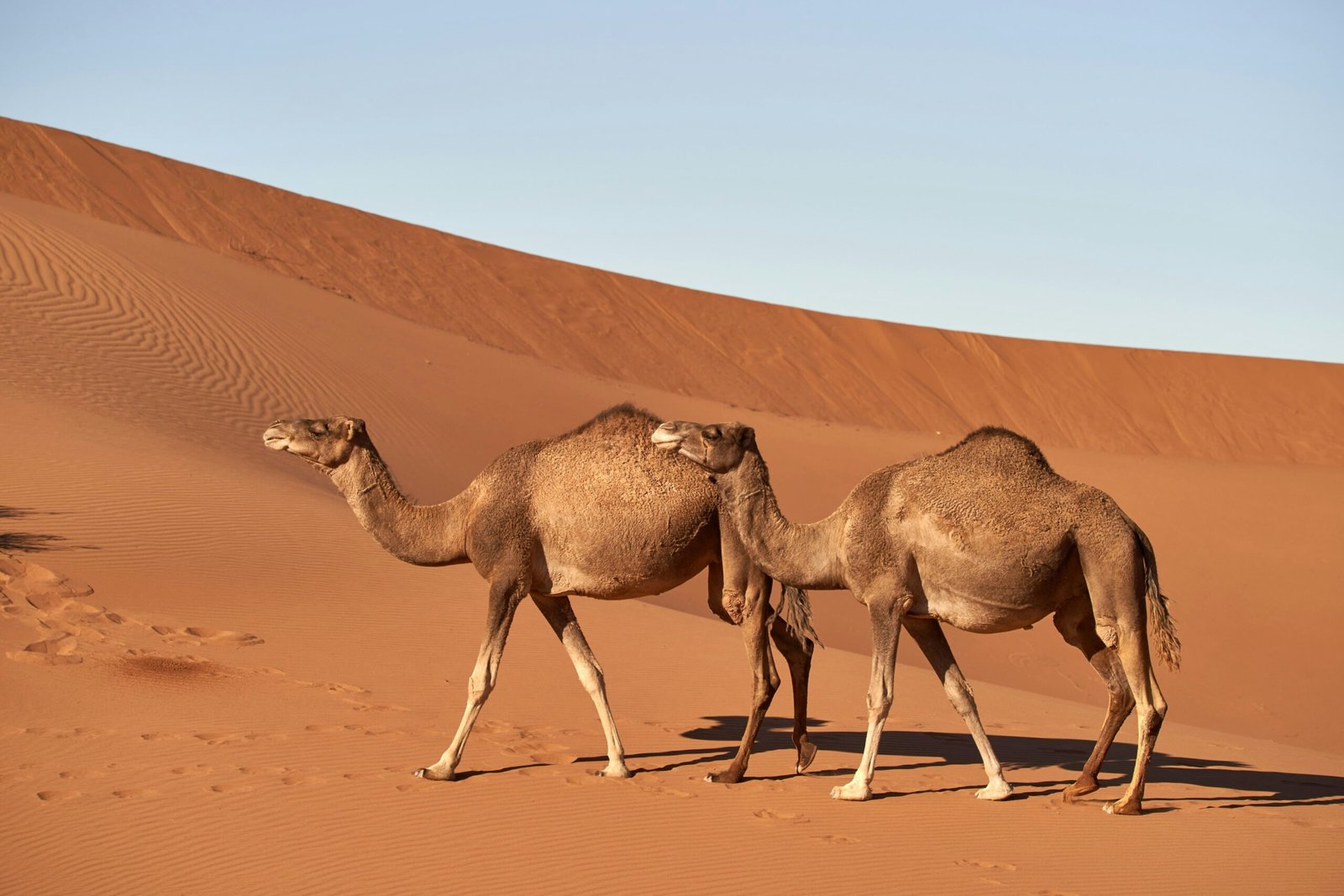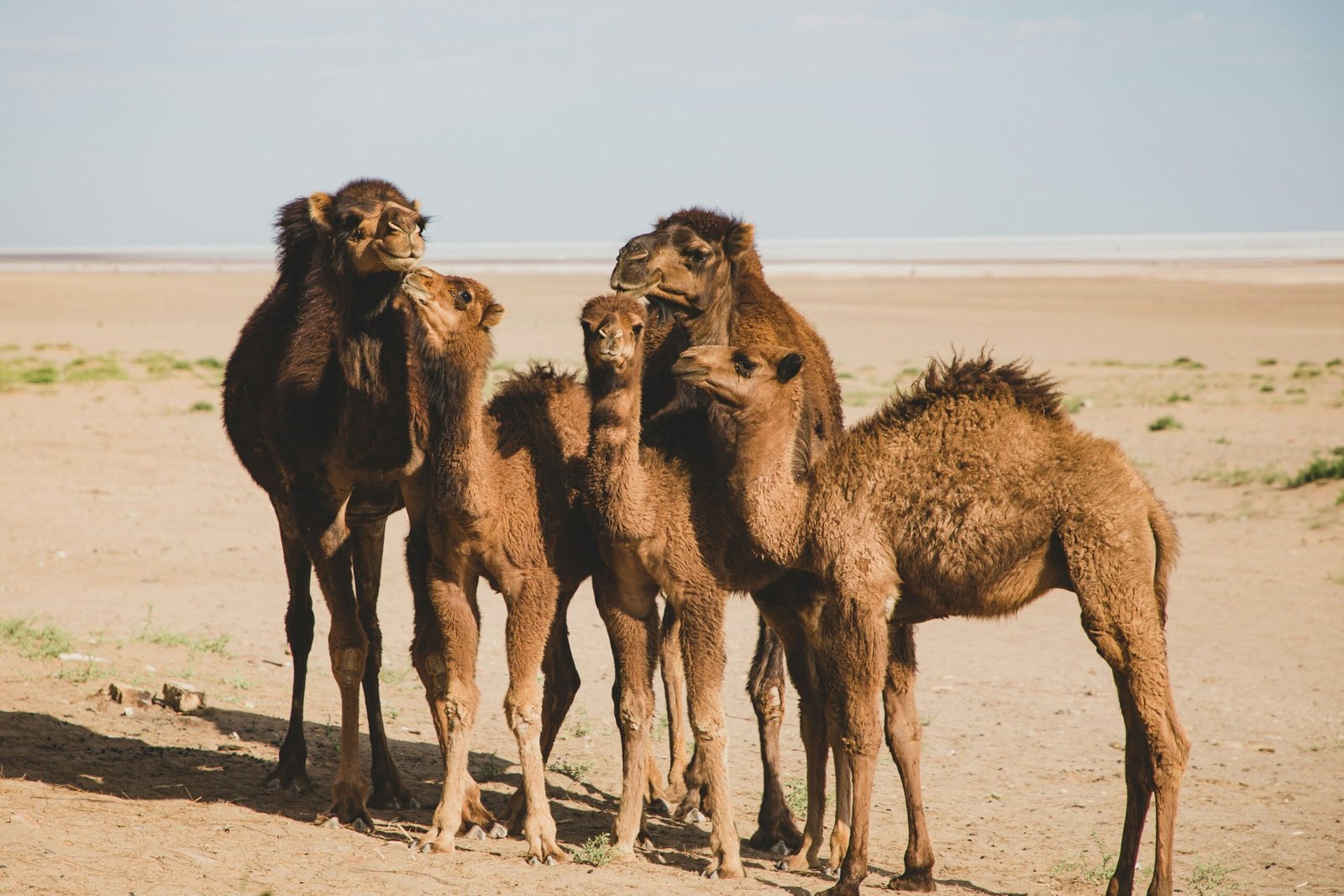Camels are fascinating creatures that have adapted to survive in harsh desert environments. They possess unique characteristics and abilities that make them well-suited for life in arid regions. In this article, we will explore five important facts about camels that highlight their incredible features and significance.
1. Camel Adaptations
Camels have several remarkable adaptations that enable them to thrive in desert conditions. One of the most noticeable features is their humps. Contrary to popular belief, these humps are not water storage units. Instead, they store fat, which camels can metabolize for energy when food and water are scarce. This fat serves as a valuable resource, allowing camels to survive for long periods without consuming food or water. Additionally, camels possess long, thick eyelashes and bushy eyebrows that protect their eyes from blowing sand and harsh sunlight. These adaptations help camels navigate through the desert environment with ease, ensuring their survival.
Some other adaptations that camels possess include their ability to regulate body temperature. Camels can tolerate extreme temperature fluctuations, ranging from freezing cold nights to scorching hot days. They have a unique cooling system that allows them to conserve water by reducing sweat production and minimizing water loss. This adaptation helps them maintain their hydration levels and prevents dehydration in the arid desert environment.
Furthermore, camels have specialized kidneys that allow them to produce urine with a high concentration of salts, minimizing water loss through urination. This adaptation ensures that they can conserve as much water as possible, enabling them to survive in areas where water is scarce.
In conclusion, camels have evolved remarkable adaptations to thrive in desert conditions. Their humps, eyelashes, bushy eyebrows, cooling system, and specialized kidneys all contribute to their ability to survive in arid environments.
2. Two Types of Camels
There are two main types of camels: the dromedary camel, also known as the Arabian camel, and the Bactrian camel. The dromedary camel has a single hump, while the Bactrian camel boasts two humps. Both types of camels have distinct characteristics that allow them to survive in different climates.
The dromedary camel is well-adapted to hot, arid regions. Its single hump serves as a reservoir for fat, providing a source of energy during times of food and water scarcity. The dromedary camel has long, slender legs that help it move swiftly through the desert sands. Its streamlined body allows it to conserve energy and withstand the scorching heat of the desert.
On the other hand, the Bactrian camel is suited for colder, mountainous regions. Its two humps store fat reserves, allowing it to endure long periods without food or water. The Bactrian camel has a thick, shaggy coat that provides insulation against the cold temperatures of its habitat. Its broad, sturdy feet enable it to traverse rocky terrains with ease.
Both types of camels have adapted to their respective environments, making them highly efficient in their ability to survive in extreme conditions.
3. Incredible Water Conservation
Camels have an exceptional ability to conserve water, which is essential for their survival in desert environments. Their red blood cells are uniquely shaped, allowing them to retain water for a longer period and prevent dehydration. Unlike other mammals, their oval-shaped red blood cells can continue to function even when partially dehydrated. This adaptation enables camels to tolerate significant water loss without experiencing adverse effects. For instance, they can lose up to 25% of their body weight through sweating or urination and still function normally.
In addition to their specialized blood cells, camels have other adaptations that aid in water conservation. Their nostrils are equipped with muscular flaps that can close to prevent water vapor from escaping during exhalation. This unique feature reduces water loss from their breath. Moreover, camels have a thick, insulating coat that helps minimize water evaporation from their skin. The combination of these adaptations allows camels to survive in the arid desert environment with limited access to water.
4. Efficient Travelers
Camels are renowned for their endurance and ability to cover long distances in extreme conditions. They have specially designed feet that enable them to navigate through sandy terrain without sinking. The large, soft footpads help distribute their weight and prevent sinking into the sand. This adaptation allows them to move swiftly and efficiently across the desert, conserving energy and minimizing fatigue.
Furthermore, camels can withstand high temperatures, as their long legs keep their bodies farther away from the hot desert ground. This distance helps reduce heat absorption and keeps them relatively cooler. Their ability to regulate body temperature also plays a role in their endurance, as they can withstand the heat without becoming exhausted.
Camels are also known for their ability to carry heavy loads over long distances. Their strong, muscular bodies and sturdy backs make them ideal pack animals. They have been used for centuries as reliable means of transportation, particularly in nomadic communities. This efficient travel capability makes camels invaluable in desert regions where other modes of transportation may not be feasible.
5. Essential Role in Desert Cultures
Camels hold immense cultural significance in many desert regions around the world. For centuries, these animals have been crucial to the survival and livelihood of nomadic communities. Camels are used as reliable means of transportation, carrying heavy loads across vast distances. They also provide milk, meat, and wool, serving as important sources of sustenance for desert dwellers. The milk is highly nutritious and can be consumed fresh or turned into various dairy products. The meat is lean and protein-rich, offering nourishment in environments where vegetation is scarce. Camel wool is used for clothing and insulation, providing protection against the harsh desert climate.
In addition to their practical uses, camels have become an integral part of desert cultures. Camel racing and camel festivals are popular events that celebrate the cultural heritage of camel-rearing communities. These festivities showcase the bond between humans and camels, highlighting the importance of these animals in the traditions and customs of desert dwellers.
In conclusion, camels are extraordinary creatures that exhibit incredible adaptations and play a vital role in desert ecosystems. Their unique abilities to store fat, conserve water, withstand harsh conditions, and efficiently travel make them well-suited for life in arid regions. Whether it’s their distinctive humps, exceptional water conservation skills, efficient travel capabilities, or their cultural significance, camels continue to captivate and intrigue people worldwide.











